In 2004, Godzuka had a problem with his rear shock replacement.
You can read about it here:
viewtopic.php?f=10&t=5559Every "cheap/used" car that I've bought in the past 10 years has needed the shocks replaced.
This is one of the most overlooked parts of a car, and one of the most satisfying things you can do to improve it. Additionally, a car which 'porpoises' over bumps is unsafe. This will put an end to that and make it less likely your air bag will be needed. Don't know what I mean? Watch an old Buick next time it goes over an uneven surface.
Here's how you "do it yourself" on the rear:
This example is a 93 Metro Convertible, if your undercarriage looks the same, the technique will apply.
In the trunk you will find this:
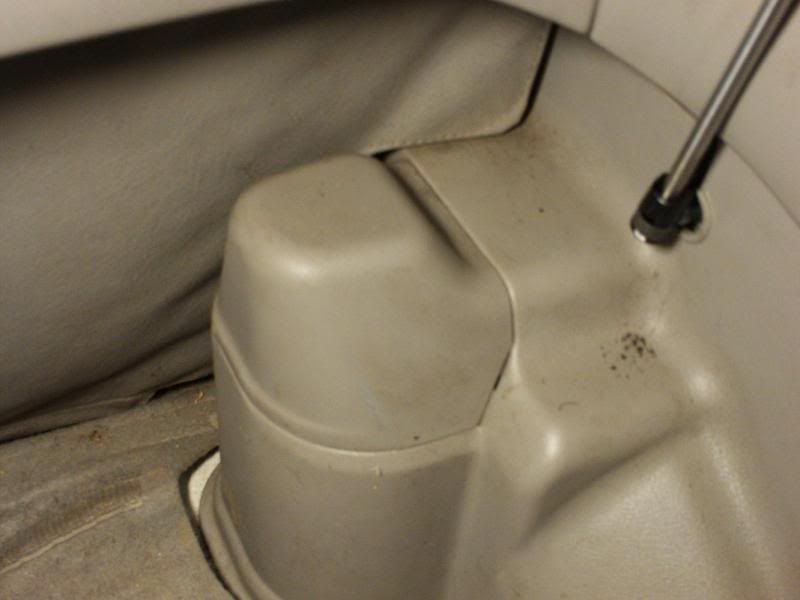
You remove the plastic cap to get this:
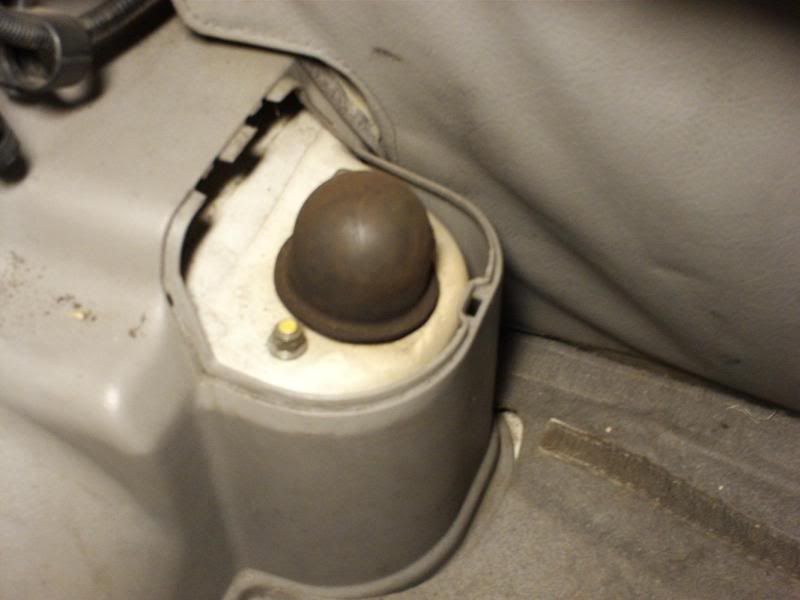
Then you remove the rubber cap to make it look like this:
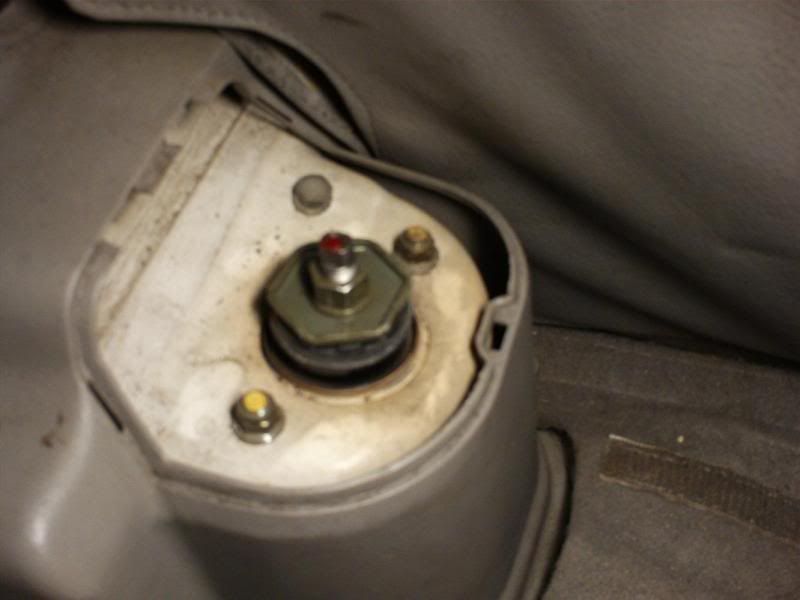
Oh no, complications!
No worry. Go and get a #12 MM wrench and put it on like this:
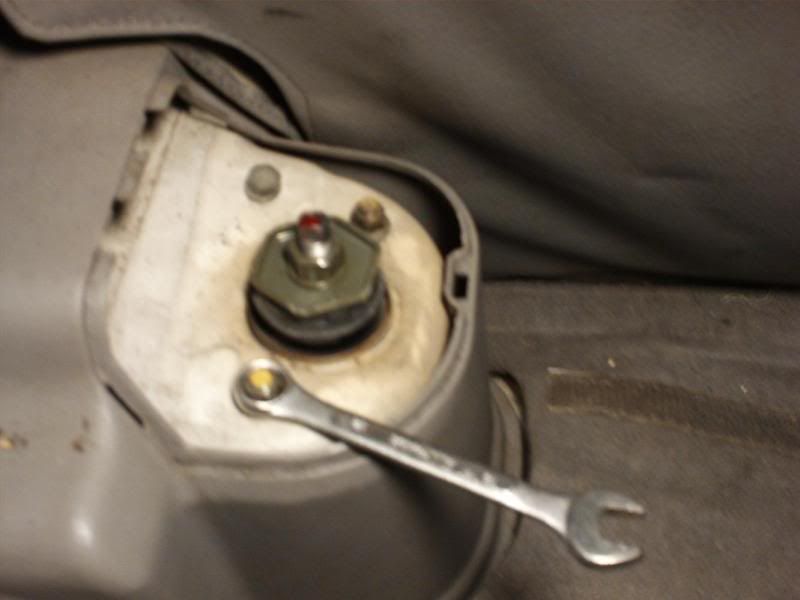
So far, so good. Now remove the two 'nuts'.
It will end up looking like this:
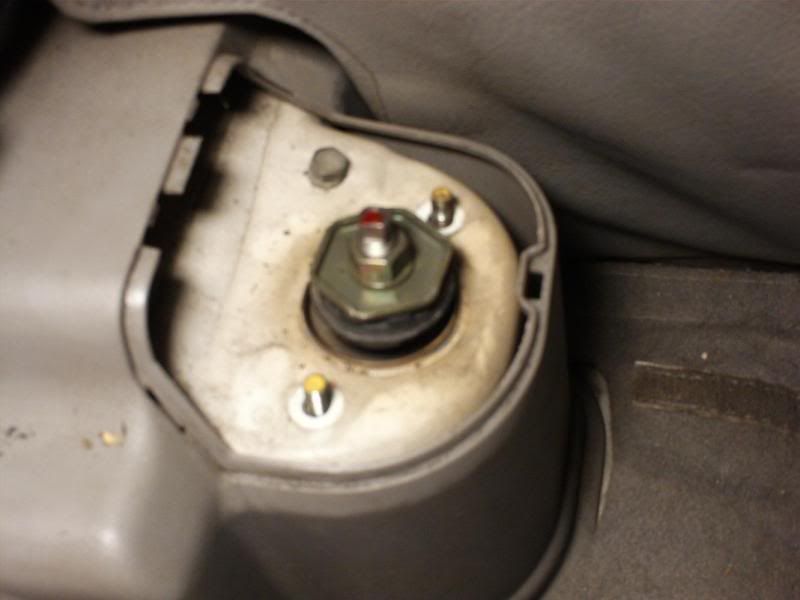
Are you still with me?
You are DONE on the top.
Now it's time to travel to the underside of your car.
Jack it up:
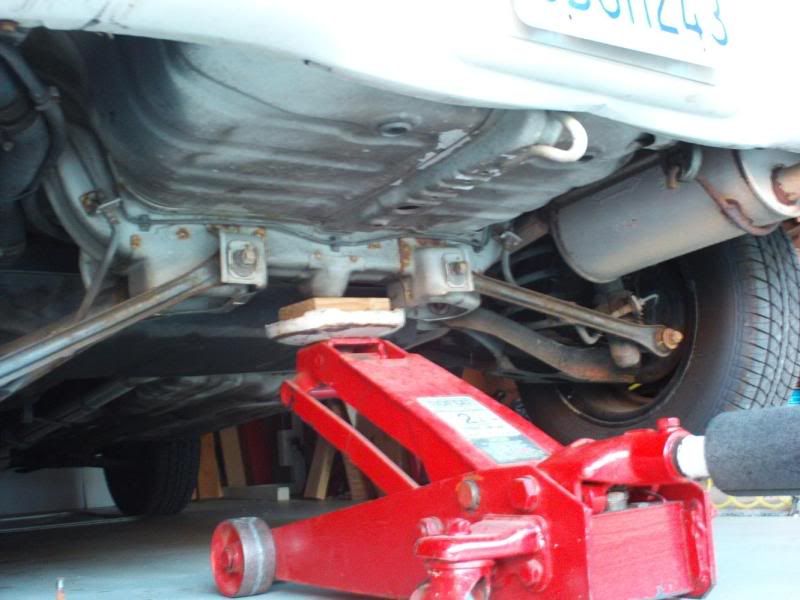
You can use another style jack, but lifting it in the center seems easy.
It probably isn't necessary to put some 'jack stands' under the car if you're careful, but that'll be your decision, not mine.
Next, check out your 'undercarriage' for rust:
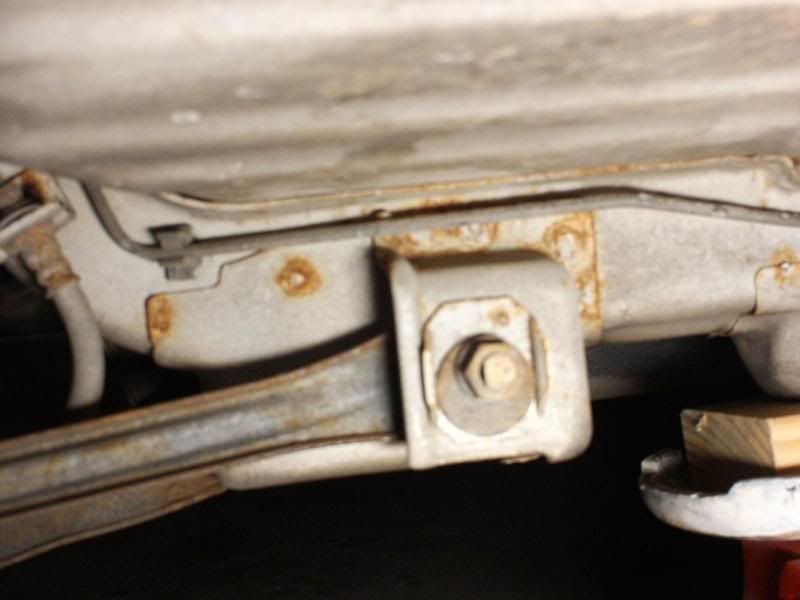
and find the lower part of the shock absorber:
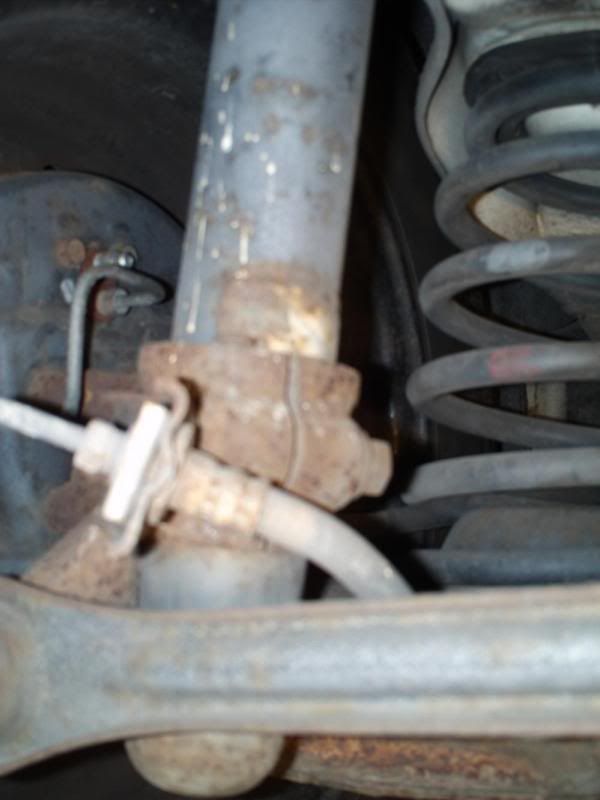
Ole Godzuka called this a 'sandwich bolt', but we'll call it a 'pinch bolt' for now.
Can you see it? It's a bit rusty, but not too bad. Get out your trusty 14 MM wrench:
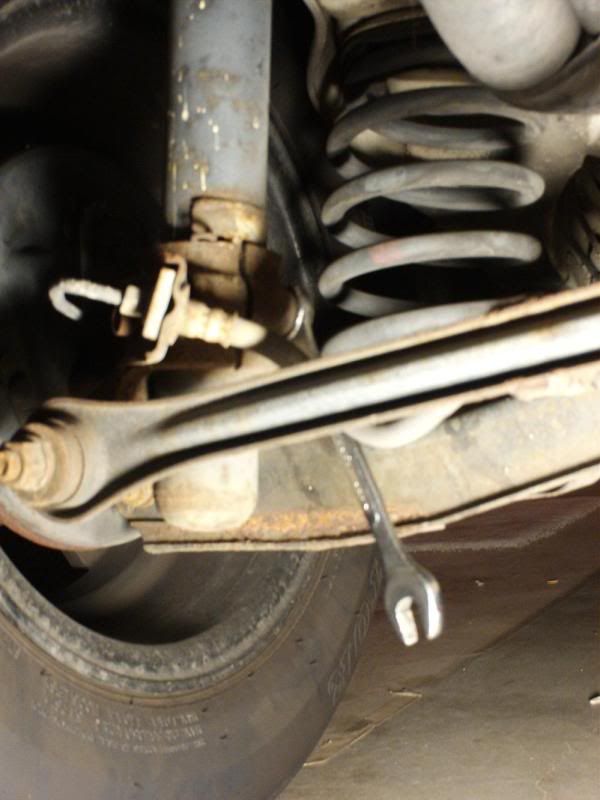
and use the box end (not the open end) to loosen that thing.
You can also use a socket but take the bolt all the way out.
Now would be a good time to hit that lower end with a little spray oil if you have some.
Once the bolt is out, you might have to 'spread' the pinch joint using a large screwdriver, or a chisel driven up parallel with that old shock.
Also, you can put a block of wood under the old shock and lower the car a bit to get that old shock to slip up and out of the lower pinch joint.
Now that the shock is out of the lower joint, ease it down:
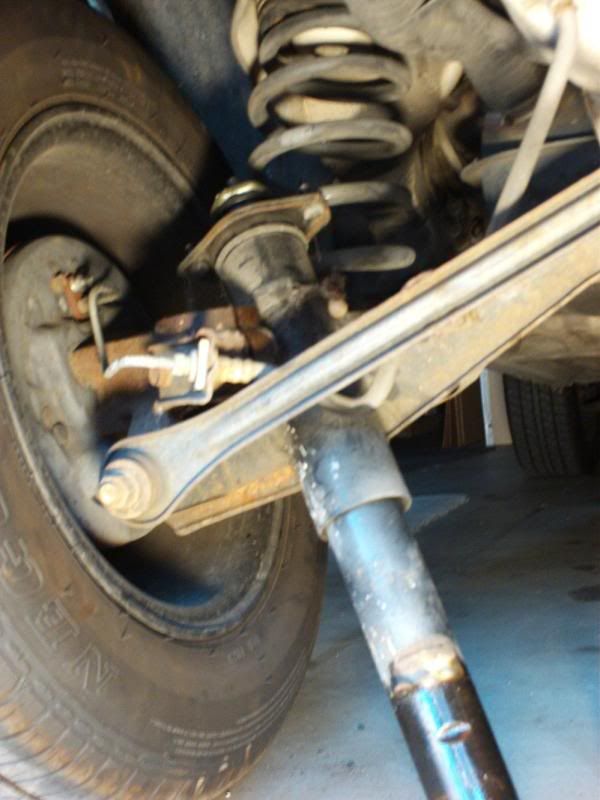
and out.
This will reveal the lower shock pinch joint in all it's glory:
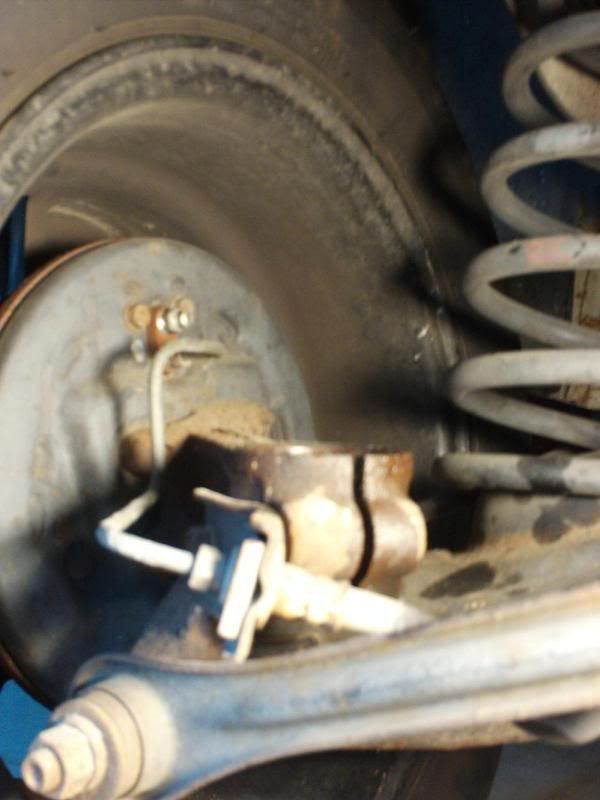
That little piece can be a real pain in the a*s, so take a few minutes to clean up the inside and lightly lube it.
Then, when you put the new shock back in, it won't be so difficult.
Next we have the old shock next to the newly ordered shock:
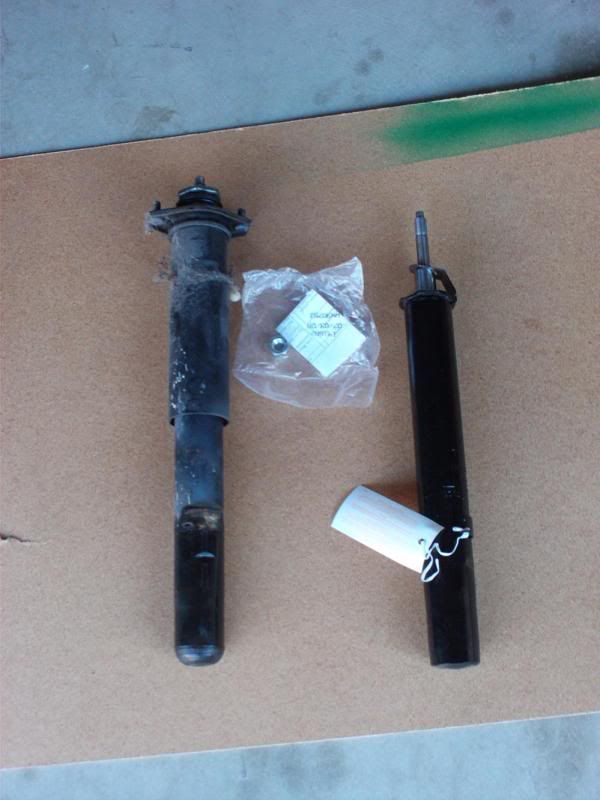
And they seem to be a match, so we can continue.
The top part of the shock must be removed:
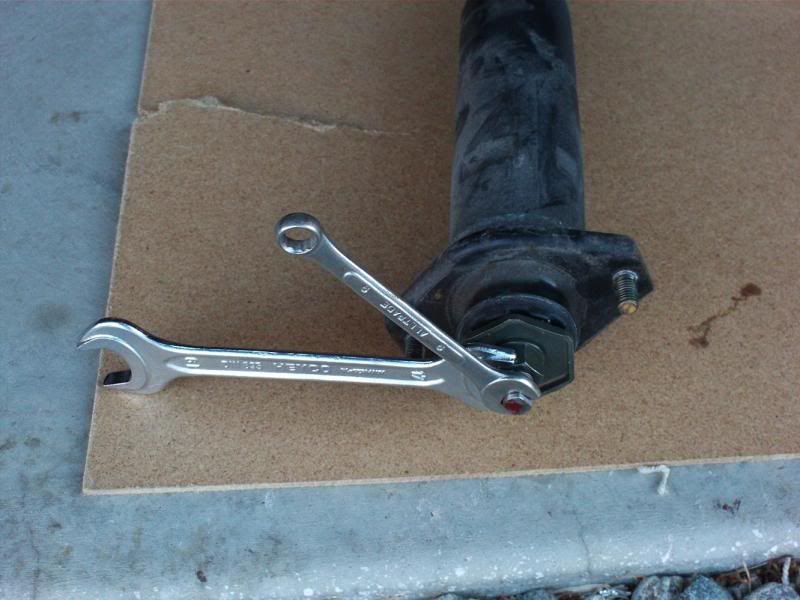
This rig shows a stock set up. The little wrench is an 8 MM and the large one is a 17 MM.
You must hold the shaft with the 8 MM and loosen the 17 MM.
If you don't have an 8MM, you can use a vise grip. Actually, the vise grip works better.
Some people try this:
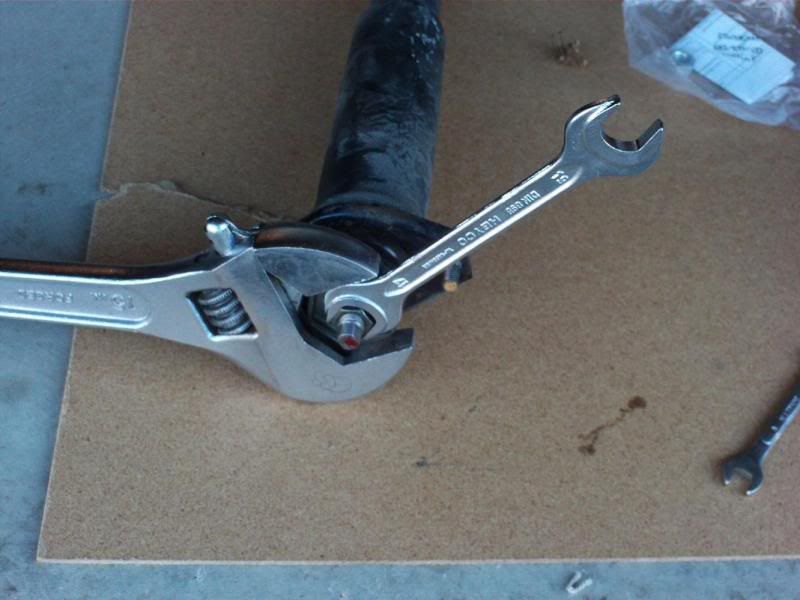
which looks great, but is a waste of time. The center shaft can spin, so you won't be able to get it apart.
Once you get the bolt off, you can lay the parts between the new and old shock:
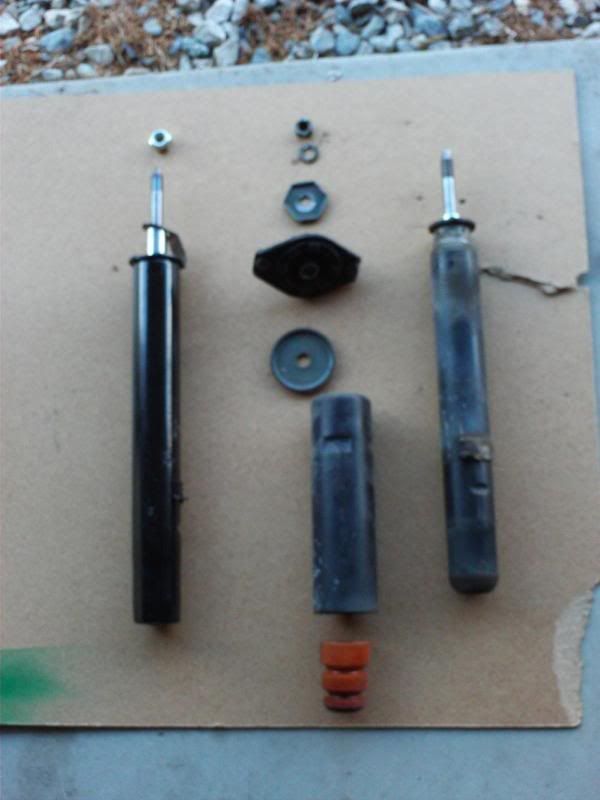
so that you don't get confused.
Now, transfer the parts to the new shock and tighten up the bolt on the top as in the step above.
In this case, I kept the old bolt, and held the shaft tip with a vise grip when it came time to do the final tightening.
Here you can see the results:

The two pieces on the left will not be used.
This shock is ready to be slid up into the car.
The most difficult part, sliding the lower part of the shock into the pinch joint at the bottom, can be facilitated with some spray oil and spreading that joint a bit. You must be patient; some go in easily, others ...are a 'bear'.
If the going gets real rough, you can
carefully grab the very bottom of the shock with a large vise grip and wiggle it down into it's home.
When you finally get the shock all the way back down, the 'dent' in the lower shock will match up so the pinch bolt can slide in and be tightened.
Once that's done, you're back to this step:

If those top two bolts aren't lined up, don't panic! They can be rotated into place by hand.
That's it.
So many people have said, "I don't know ANYTHING about cars, I just put gas in, and that's it."
I've got to wonder how difficult the above R&R (remove and replace) is for the ordinary Joe.
Considering the labor is often equal to the price of the replacement parts, this job may cost the 'ignorant' customer over $200.
I hope you will attempt to change your rear shocks using this DIY.
That way, the next time I go to buy a used car, I won't have to!





